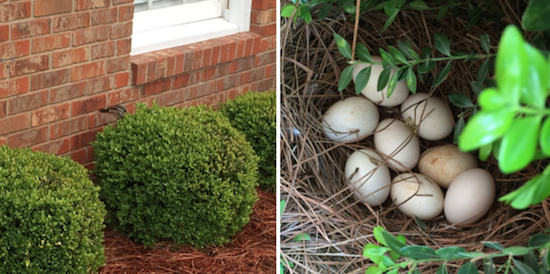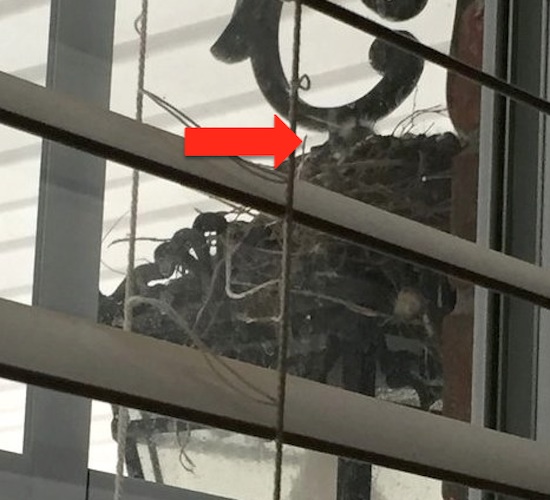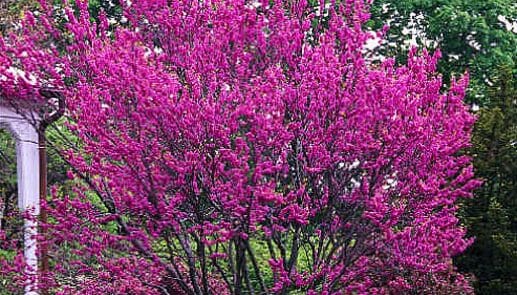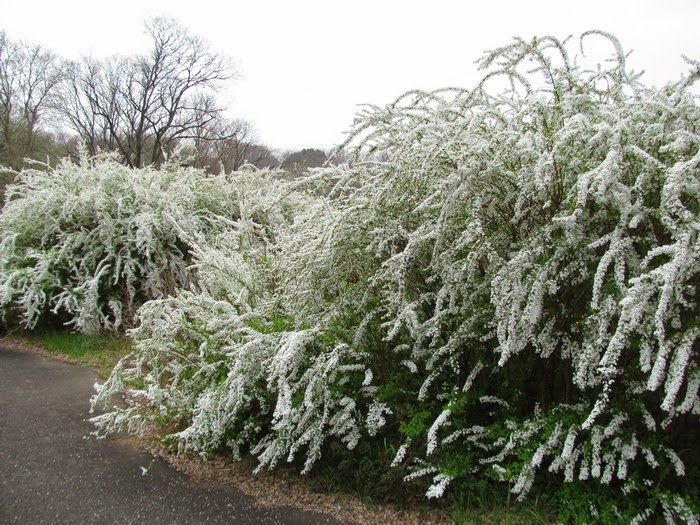Intermarkets' Privacy Policy
Donate to Ace of Spades HQ!
aceofspadeshq at gee mail.com
Buck:
buck.throckmorton at protonmail.com
CBD:
cbd at cutjibnewsletter.com
joe mannix:
mannix2024 at proton.me
MisHum:
petmorons at gee mail.com
J.J. Sefton:
sefton at cutjibnewsletter.com
CBS "News" Announces That They Have "Missed" Big Stories Because They Only Talk to "Advocates," "Academics," and "Elites;" Admits That No One Trusts the "Legacy Media" Any Longer
THE MORNING RANT: Instacart Allowed Pricing Based on Who You Are Rather than What You’re Buying
Mid-Morning Art Thread
The Morning Report — 1/2/26
Daily Tech News 2 January 2026
Thursday Overnight Open Thread - January 1, 2026 [Doof]
New Years Day Cafe
Always Sunny Discusses 9/11 Open Thread
Beaver Lovers Open Thread
Jim Sunk New Dawn 2025
Jewells45 2025
Bandersnatch 2024
GnuBreed 2024
Captain Hate 2023
moon_over_vermont 2023
westminsterdogshow 2023
Ann Wilson(Empire1) 2022
Dave In Texas 2022
Jesse in D.C. 2022
OregonMuse 2022
redc1c4 2021
Tami 2021
Chavez the Hugo 2020
Ibguy 2020
Rickl 2019
Joffen 2014
maildrop62 at proton dot me
TBD
Saturday Gardening Thread: DO Look Down! [Y-not and KT]
PLEASE KEEP THIS THREAD FREE OF POLITICS. THANKS. Y-NOT
Y-not: Greetings gardening morons and 'ettes!
To start things off, this is not gardening-related, but it seems appropriate as Tax Day approaches:
(ICYMI, Tax Day was moved to April 18th this year. Here's why.)
"DO look down!"
Where trickle and plash the fountains,
Marble fountains, yellowed with much water.
from "In a Garden" by Amy Lowell
My contribution will be rather short this week as I have family visiting. Being a good hostess, we have been hitting many of the Kentucky tourist destinations, including Mammoth Cave. The original entrance to the cave is pictured above.
This was my first visit to Mammoth Cave National Park, but I'm sure it won't be my last. A bit about the cave here:
Under a swath of Kentucky hills and hollows is a limestone labyrinth that became the heartland of a national park. The surface of Mammoth Cave National Park encompasses about 80 square miles. No one knows how big the underside is. More than 365 miles of the five-level cave system have been mapped, and new caves are continually being discovered. Two layers of stone underlie Mammoth's hilly woodlands.
In addition to the spectacular cave, the above ground portions of the park are lovely:
Spring is just now arriving in the Park. Many of the trees are still bare, but the redbuds and dogwoods are blooming. The greenest parts of the park right now are down at ground level. We spied many types of mosses, ferns, wildflowers, and even carnivorous plants during our short visit to the park:
A bit about Mammoth National Park's flora here:
Mammoth Cave is located in the transitional zone between the open grasslands and drier oak-hickory forests to the west, and the more moist mixed mesophytic forests to the east. It is likewise located transitional between the sub-tropical climates to the south and the colder climates to the north. Many of the plant species found in the park are at the northern, southern, eastern, or western limits of their natural range.Contributing even more to the immense diversity of the flora is the wide variety of habitats supporting differing plant communities. There are dry upland flats and sandstone-capped ridges, limestone exposed slopes, ravines and karst valleys, broad alluvial bottoms along the Green River, gorge-like hemlock ravines, deep sinks with exposed subterranean streams, old-growth timber, successional growth forests, barrens and savannah habitats, and wetlands, including ponds, forest swamps, springs, seasonal wet woodlands, and cobble bars and banks along the Green River.
Past botanical surveys in the park have found 25 species listed as Endangered, Threatened, or of Special Concern by Kentucky State Nature Preserves Commission. Mammoth Cave National Park is a vital refuge for the protection of plant communities and individual species in danger.
We didn't have time to take any of the guided above-ground tours on this trip and I haven't had a chance to I.D. the plants I saw yet. (Perhaps the Kentucky Native Plants Society will be of help in my efforts.) However, we did recognize one very distinctive plant:
These meat-eating pitcher plants belong to two large families of monocots -- the Nepenthaceae (Old World) and Sarraceniaceae (New World).The pitchers under the Old World clan live high above a tree. Because there is not much of a food source up there, the plant resorts to find an alternative source of nutrients. What it does is to fold the ends of its leaves like a cup and concocts nectar juices and waits daintily for its helpless victims.
Meanwhile, the New World family members enjoy the attention of many more insects while staying on ground. Unlike its relative who lives up in the trees, these pitchers actually form a whole pitcher out of its leaf.
The variety of forms these plants take is quite spectacular. I like this one a lot.
Several weeks ago we were talking about what to do with perpetually soggy areas. Perhaps I can create a bog garden!
Have any of you devoted all or part of your yard to bog or shade gardening?
Gone to the Birds
For the past week or two we've had an occasional visitor, a female duck.
Lady Duck is back again. pic.twitter.com/40MTWxNEEj
— MoxieMom (@moxiemom) April 14, 2016
We usually spot her in the early morning. I had assumed she was stopping by on her way to one of the nearby golf course ponds. Imagine our surprise when we saw this:

'Looks like our dogs will only be allowed supervised visits to the backyard for several weeks!
Meanwhile, the house finches who built a nest on top of our patio light fixture are busy raising their young:

So far I've only spied two heads (and mouths!) when the parents visit the nest to feed.
Things are very lively at Casa Y-not these days! Do any of you have wildlife raising young in your yards right now?
Lawn Mower Advice
If you were to buy a basic gas-powered mower, what would you buy? And can mulching mowers avoid creating thosta all over the lawn?
— Tim Carney (@TPCarney) April 10, 2016
Do any of you have a favorite lawn mower to recommend?
Now, heeeere's the incomparable KT:
Thanks for the great information on Mammoth Cave National Park, Y-not. And thanks for looking down. A lot of people would miss the interesting plants you shared with us today.
I love that there are places where regular people can explore and study natural flora, fauna and geology. There is nothing quite like our National Park Service in the Old World. A natural attraction somewhat similar to Mammoth Cave is le gouffre de Padirac in France. You can take a boat on an underground stream to view cave formations. But the tourist attraction there was privately funded - by a beer maker.
Our National Park Service cannot hope to fund the projects already on its list with its budget. What if you wanted a National Park in your area? Could a park in, say, Maine be created without sticking American taxpayers with the bill? Is there an advantage to having Washington D.C. control a park in Maine? To whom is such control advantageous? Something to think about.
I also loved Y-not's surprises from Lady Duck and the house finches. We have apparently had some wildlife families in our yard, too. Jack of Spades left half a gopher in the garage. We have had some other gopher-y gifts on the porch, too. And a baby ground squirrel.
I found a much nicer surprise than half a gopher on Sunday morning when I checked last week's thread. We got a couple of comments on growing Redbud, from a gardener in Japan!
It is called hanazou where I am. I have it intertwined with yukiyanagi (snow willow?) (Spiraea thunbergii) so in spring I get red and white strings intertwined.The thing is, in the west, one is a tree, the other a low bush. Here they are both 1-2m bushes with lots of stalks.
Growing Redbud with a Companion Plant
Visualize these blooms of Chinese Redbud (Photo from Australia)

intertwined with these Spirea blossoms (photo from a Japanese park).

They must be delightful together. This imaginative pairing sent me content-mining into the links on Redbuds that accompanied Y-not's gorgeous photos from Cheekwood. Then one thing led to another . .
Many parts of a Redbud tree are edible . .
After reading Y-not's information on Redbuds, our correspondent in Japan also posted this report:
just tasted the redbud. tastes like raw spinach stalks. not really appealing. maybe the beans are better.
The Eat the Weeds Guy supplies a lot of additional information. Including history. George Washington planted some Redbuds at Mount Vernon.
Anyway, I learned that the lighter top part of the Eastern Redbud flower is sweet, but the lower part is bitter. The pods are best when very young. Think an inch in length. Maybe cooked with a little olive oil and vinegar. You can also eat the leaves when they are young. The dark-leaved cultivars like "Forest Pansy" could be interesting in a salad.
Y-not's revelation that some parts of Redbud trees are edible came from the Great Plains Nature Center in Kansas. Nice plant profile if you missed it last week. The photo below may give you an idea which part of the blossom is sweet and which part is bitter. There are many edible flowers which have palatable petals and unpalatable bases. But if you like bitter foods, you can eat the whole Redbud blossom.

Can anyone identify the insect above?
A perfect companion wildflower for Redbud turns out to be a common lawn "weed". Henbit (Lamium amplexicaule) often covers yards in April. It blooms at the same time and the color of Henbit's flower nearly matches that of the Redbud, making a wash of violet on the landscape.
Would you eat a plant called "Dead-nettle"?
"Henbit" is a common name for one species of annual Lamium, or "Dead-nettle". Chickens love it. Some Gardening Morons have mentioned ornamental perennial types of dead-nettle in the comments. These are usually used as ground covers or hanging basket plants. Maybe I should profile them someday. The common name "dead-nettle" refers to the resemblance between some species and stinging nettle. These "nettles" are "dead" because they do not have stinging hairs. Dead-nettles are in the mint family, unlike Stinging Nettle.
Henbit is an annual weed, often found with its cousin Lamium purpurea. The latter is sometimes called Red Archangel or Purple Archangel. Both of these weeds are edible. The Eat the Weeds Guy likes them. As usual, he includes a lot of other interesting information. If you are into history, be sure to catch the part on purple dye production in the ancient world. Plus:
"Lamia" was the name of grotesque creatures in Greek mythology and means "female man-eater." The little flower can resemble creatures, if you have an imagination.
Note the resemblance between a contemporary image of Lamia and the photo of the little flowers below. Heh.

Lamium flowers attract hummingbirds and the annual kinds serve as an early nectar and pollen source for bees. In Texas, Henbit flowers are sometimes called "Giraffe Heads". These weeds are very widespread. They are even found in California. I know I have seen them. Not sure where.

Bridal Wreath Spirea
Sunset notes that there are two broad categories of Spireas: The "bridal wreath" type with white blossoms all along the branches, and the kinds with pink and/or white blossoms n terminal clusters. There are several species even in the "bridal wreath" category. I really like the name "snow willow" for the Spiraea thunbergii grown by our correspondent in Japan. It has much narrower leaves than any Bridal Wreath Spirea I have seen. The form of the leaves must provide a nice, subtle contrast with Redbud leaves during the summer.
There is a yellow-leaved cultivar noted for holding onto its attractive fall foliage longer than most deciduous plants. Especially in the Pacific Northwest. It is called Ogon in Japan and 'Mellow Yellow' in the USA. The preceding link includes suggested companion plants. Winterberry is recommended elsewhere to complement its late fall color. This is its early summer form:

There is also a low-growing Bridal Wreath Spirea, S. nipponica 'Snowmound' that blooms later than S. thunbergii. There is a big Bridal Wreath that needs little winter chill, and there are also a couple that are rated by Sunset for Alaska. Some Bridal Wreaths have single flowers, others have double flowers. Let me know if you want details.
Redbuds: Not just for the South
Y-not's link last week from Southern Living called Redbud an Essential Southern Plant. But some Redbuds are very hardy. Eastern Redbud is, after all, Cercis canadensis.
The dark-leaved, weeping and variegated Redbuds may like part shade, but there are some for full sun in blazing heat, too. 'Oklahoma' and 'Texas White' are selections from a subspecies with leathery, heat-tolerant leaves. Redbud is the State Tree of Oklahoma.
There are some improved forms of Chinese Redbud, too. "Spectacular in the high deserts of Arizona" according to Sunset. Avondale, discovered in New Zealand, will take a tree form with some training. Don Egolf is a smaller seedless cultivar that you can buy through the AoSHQ Amazon Store.
In our dry, hot-summer area you often see shrubby redbuds planted along freeways. Tree-form redbuds are more common in home landscaping. But they are generally smaller than the trees grown the East. Some people think the seedpods of the drought-tolerant Western Redbud are an attractive feature. What do you think?

Southern Living Climate Zones?
You might recall that I asked about similarities between the New Southern Living Garden Book and the Sunset Western Garden book. I got some informative feedback in the comments. Maybe I can reciprocate.
Y-not's link on Redbuds from the Southern Living site included a lot of information that seemed to have been taken verbatim from my Sunset Western Garden Book. There were some additional details added. And the climate zones were different. The Sunset Western Garden Book uses the Sunset Western Climate Zones.
At the link above, USDA hardiness zones are included in the descriptions of various Redbud cultivars. The AHS Heat Zones are listed for the Mexican subspecies of Eastern Redbud. There are also some abbreviations I had never seen before. I looked up a key:
US = Upper South
MS = Middle South
LS = Lower South
CS = Coastal South
TS = Tropical South
Has anyone seen a map for these zones, or whatever they are called? Compare to the seldom-used Sunset National Climate Zones for the Southeast.
I found some lush flower photos by a blogger in one of those zones. In Central Maryland to be specific. Take a look around the site if you are in the mood for some spring.

Y-not: Thanks, KT!
To close things up, here's a song by the Man in Black that's more appropriate to the Saturday Gardening Thread...
Here's some Johnny Cash trivia you might not know.
What's happening in YOUR gardens this week?
Mohammed Longshanks, oil prince : "I gave Cuomo double his lands in New York with mat ..."
Joe Mannix (Not a cop!): "Not sure if we do not already have one, just witho ..."
wth: "How many newscasts have they done that led with th ..."
Blonde Morticia: " Trump made a statement today saying that the US ..."
Orson: "Interesting how the CIA is considered to be buffoo ..."
BurtTC: "I saw the Leaking Dykes open for the Indigo Girls ..."
18-1: "[i] Seriously? Do you have a link?[/i] The pro ..."
whig: "We're going to wind up with a king *here.* Why the ..."
CBS news. Bad boyfriend: "Too many times i have gotten drunk, come home late ..."
toby928(c): "I will bet that the Shah doesn't want to be a figu ..."
Tim Walz: "I am proud to announce the "Grand Opening" of the ..."
CBS "News" Announces That They Have "Missed" Big Stories Because They Only Talk to "Advocates," "Academics," and "Elites;" Admits That No One Trusts the "Legacy Media" Any Longer
THE MORNING RANT: Instacart Allowed Pricing Based on Who You Are Rather than What You’re Buying
Mid-Morning Art Thread
The Morning Report — 1/2/26
Daily Tech News 2 January 2026
Thursday Overnight Open Thread - January 1, 2026 [Doof]
New Years Day Cafe
Always Sunny Discusses 9/11 Open Thread
Beaver Lovers Open Thread
Paul Anka Haiku Contest Announcement
Integrity SAT's: Entrance Exam for Paul Anka's Band
AllahPundit's Paul Anka 45's Collection
AnkaPundit: Paul Anka Takes Over the Site for a Weekend (Continues through to Monday's postings)
George Bush Slices Don Rumsfeld Like an F*ckin' Hammer
Democratic Forays into Erotica
New Shows On Gore's DNC/MTV Network
Nicknames for Potatoes, By People Who Really Hate Potatoes
Star Wars Euphemisms for Self-Abuse
Signs You're at an Iraqi "Wedding Party"
Signs Your Clown Has Gone Bad
Signs That You, Geroge Michael, Should Probably Just Give It Up
Signs of Hip-Hop Influence on John Kerry
NYT Headlines Spinning Bush's Jobs Boom
Things People Are More Likely to Say Than "Did You Hear What Al Franken Said Yesterday?"
Signs that Paul Krugman Has Lost His Frickin' Mind
All-Time Best NBA Players, According to Senator Robert Byrd
Other Bad Things About the Jews, According to the Koran
Signs That David Letterman Just Doesn't Care Anymore
Examples of Bob Kerrey's Insufferable Racial Jackassery
Signs Andy Rooney Is Going Senile
Other Judgments Dick Clarke Made About Condi Rice Based on Her Appearance
Collective Names for Groups of People
John Kerry's Other Vietnam Super-Pets
Cool Things About the XM8 Assault Rifle
Media-Approved Facts About the Democrat Spy
Changes to Make Christianity More "Inclusive"
Secret John Kerry Senatorial Accomplishments
John Edwards Campaign Excuses
John Kerry Pick-Up Lines
Changes Liberal Senator George Michell Will Make at Disney
Torments in Dog-Hell
The Ace of Spades HQ Sex-for-Money Skankathon
A D&D Guide to the Democratic Candidates
Margaret Cho: Just Not Funny
More Margaret Cho Abuse
Margaret Cho: Still Not Funny
Iraqi Prisoner Claims He Was Raped... By Woman
Wonkette Announces "Morning Zoo" Format
John Kerry's "Plan" Causes Surrender of Moqtada al-Sadr's Militia
World Muslim Leaders Apologize for Nick Berg's Beheading
Michael Moore Goes on Lunchtime Manhattan Death-Spree
Milestone: Oliver Willis Posts 400th "Fake News Article" Referencing Britney Spears
Liberal Economists Rue a "New Decade of Greed"
Artificial Insouciance: Maureen Dowd's Word Processor Revolts Against Her Numbing Imbecility
Intelligence Officials Eye Blogs for Tips
They Done Found Us Out, Cletus: Intrepid Internet Detective Figures Out Our Master Plan
Shock: Josh Marshall Almost Mentions Sarin Discovery in Iraq
Leather-Clad Biker Freaks Terrorize Australian Town
When Clinton Was President, Torture Was Cool
What Wonkette Means When She Explains What Tina Brown Means
Wonkette's Stand-Up Act
Wankette HQ Gay-Rumors Du Jour
Here's What's Bugging Me: Goose and Slider
My Own Micah Wright Style Confession of Dishonesty
Outraged "Conservatives" React to the FMA
An On-Line Impression of Dennis Miller Having Sex with a Kodiak Bear
The Story the Rightwing Media Refuses to Report!
Our Lunch with David "Glengarry Glen Ross" Mamet
The House of Love: Paul Krugman
A Michael Moore Mystery (TM)
The Dowd-O-Matic!
Liberal Consistency and Other Myths
Kepler's Laws of Liberal Media Bias
John Kerry-- The Splunge! Candidate
"Divisive" Politics & "Attacks on Patriotism" (very long)
The Donkey ("The Raven" parody)

